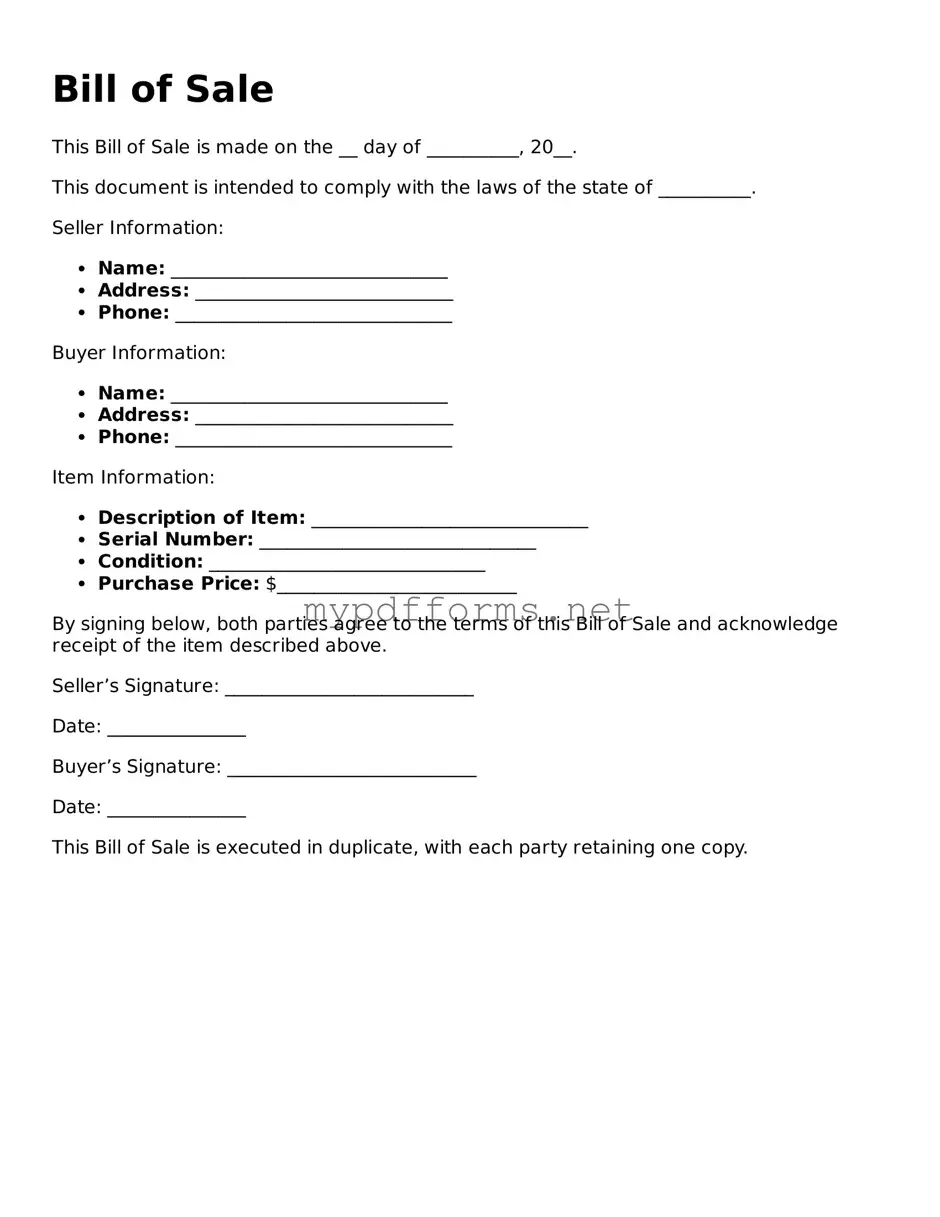A purchase agreement is a document that outlines the terms of a sale between a buyer and a seller. Similar to a Bill of Sale, it details the items being sold, the purchase price, and the responsibilities of both parties. However, a purchase agreement often includes additional terms such as financing arrangements or contingencies, making it more comprehensive for larger transactions.
A lease agreement is another document that shares similarities with a Bill of Sale. While a Bill of Sale transfers ownership of an item, a lease agreement allows one party to use an asset owned by another for a specified time in exchange for payment. Both documents serve to clarify the terms of an exchange, but a lease focuses on temporary possession rather than outright ownership.
A title transfer form is closely related to a Bill of Sale, especially in the context of vehicles. This document formally transfers ownership from the seller to the buyer and is often required by state authorities to register the vehicle in the new owner's name. While a Bill of Sale serves as proof of the transaction, the title transfer form is essential for legal ownership recognition.
An invoice is another document that can be compared to a Bill of Sale. An invoice lists goods or services provided and the amount due, similar to how a Bill of Sale records the details of a sale. However, an invoice typically serves as a request for payment rather than proof of ownership transfer, making it more transactional in nature.
An assignment agreement is a document that transfers rights or interests from one party to another. Similar to a Bill of Sale, it formalizes a change in ownership or control over an asset. However, an assignment agreement is often used for intangible assets, such as intellectual property or contracts, rather than physical items.
A consignment agreement outlines the terms under which one party sells goods on behalf of another. Like a Bill of Sale, it involves the transfer of goods, but ownership remains with the consignor until the goods are sold. This document specifies how proceeds will be shared and the responsibilities of each party, differing from the outright ownership transfer seen in a Bill of Sale.
A warranty deed is a legal document used in real estate transactions to transfer property ownership. Similar to a Bill of Sale, it signifies a change in ownership. However, a warranty deed provides guarantees about the title's validity and the seller's right to sell, offering additional protections to the buyer that a Bill of Sale does not typically include.
When engaging in the sale or purchase of a dog in California, it is essential to utilize a proper legal document to ensure clarity and protection for both parties. The use of a Dog Bill of Sale form is highly recommended, as it establishes the details of the transaction, including the breed, age, and health information of the dog, serving as proof of ownership transfer and safeguarding the interests of both the seller and the buyer.
A partnership agreement is a document that outlines the terms of a business partnership. While it does not directly relate to the sale of goods, it shares the purpose of defining relationships and responsibilities between parties. Similar to a Bill of Sale, it formalizes an agreement, but it focuses on ongoing business operations rather than a one-time transaction.
A loan agreement is a contract between a borrower and a lender. It specifies the terms of the loan, including repayment conditions. While not a direct sale document, it can involve the transfer of ownership if collateral is involved. Like a Bill of Sale, it creates a formal understanding between parties, but it focuses on financial obligations rather than the exchange of goods.
